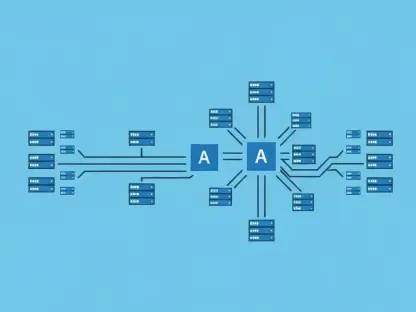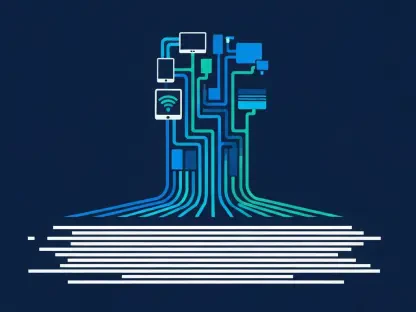In an era where technology evolves at breakneck speed, a revolutionary approach known as vibe coding has emerged as a game-changer in software engineering, fundamentally altering how developers interact with code through the power of artificial intelligence. This innovative paradigm, driven by natural language prompts to guide AI models, shifts the focus from intricate syntax to high-level intent, enabling programmers to collaborate with advanced systems in ways previously unimaginable. As AI tools become integral to workflows, they are not just accelerating development but also redefining the very essence of what it means to be a coder. This transformation sparks both excitement and concern across the tech landscape, raising questions about productivity, skill retention, and the future of the industry. With significant market growth projected and startups increasingly relying on AI-generated solutions, the impact of this shift promises to resonate deeply, reshaping career paths and development practices for years to come.
The Evolution of Development Practices
Shifting Roles for Programmers
The advent of vibe coding marks a profound change in the responsibilities of software developers, transitioning many from hands-on coders to strategic overseers of AI-driven processes. Senior professionals, leveraging tools like GitHub Copilot and Claude, have reported substantial gains in coding speed, often completing tasks more than twice as fast as before. This efficiency stems from AI’s ability to generate code based on high-level instructions, freeing up time for complex problem-solving and innovation. However, this shift comes with the critical task of reviewing and refining AI outputs, a process some describe as meticulous oversight. Rather than writing every line, these developers now act as editors, ensuring the code aligns with project goals and maintains quality standards. This evolution highlights a move toward creativity over repetition, positioning senior coders as architects of solutions rather than mere implementers, while still demanding a keen eye for detail to catch errors that automated systems might overlook.
Beyond the benefits of speed, this transformation reveals a nuanced dynamic in how experience levels influence the adoption of vibe coding. Junior developers, often still building their foundational expertise, tend to approach AI tools with more caution, prioritizing traditional coding practices to solidify their understanding of core concepts. While seniors embrace the supervisory role, juniors focus on mastering the basics, wary of becoming overly dependent on automation before they fully grasp the intricacies of programming. Surveys from industry sources indicate that this generational divide reflects differing priorities, with newer coders valuing skill development over efficiency gains. As a result, the integration of AI in workflows varies widely across teams, creating a spectrum of reliance that shapes how projects are executed. This disparity underscores the need for tailored training and mentorship to bridge the gap, ensuring that all developers can navigate this new landscape without sacrificing essential knowledge or practical abilities.
Tools Driving the Change
At the heart of vibe coding lies a suite of powerful AI tools that enable rapid code generation and prototyping, fundamentally altering the pace and scope of software projects. Platforms like Replit and Cursor have gained traction for their ability to interpret natural language prompts and produce functional code, empowering developers to focus on ideation rather than syntax. Market projections suggest that the sector for such platforms could reach a staggering $4.7 billion by 2026, driven by demand from startups and established firms alike. These tools are particularly transformative for smaller teams, allowing them to compete with larger entities by accelerating development cycles. The ability to quickly iterate on ideas has become a competitive edge, especially in fast-moving industries where time-to-market is critical. Yet, the reliance on these systems also raises questions about the consistency and reliability of the code they produce, prompting ongoing discussions about their role in long-term project success.
Equally significant is the growing prevalence of AI-generated code in real-world applications, as evidenced by data from startup incubators like Y Combinator. Reports indicate that a notable percentage of recently funded ventures rely on codebases that are predominantly created by AI, showcasing the depth of integration in cutting-edge projects. This trend points to a future where entire systems might be built with minimal manual input, further embedding vibe coding into the fabric of software engineering. Industry forecasts suggest that within a few years, massive AI models could handle entire codebases autonomously, streamlining even the most complex tasks. However, this trajectory also amplifies the importance of human judgment to refine and validate outputs, ensuring that speed does not come at the expense of quality. Balancing these advancements with oversight remains a key challenge, as the tech community grapples with maximizing potential while mitigating risks inherent in automated solutions.
Debates and Implications for the Future
Weighing the Benefits and Risks
As vibe coding gains momentum, it has sparked a heated debate about its long-term impact on the software engineering field, with advocates and critics presenting compelling arguments. Proponents highlight how this approach democratizes development, enabling individuals with limited technical backgrounds to create functional applications through intuitive AI interactions. Success stories shared across social platforms demonstrate tangible outcomes, with some developers building revenue-generating apps using AI assistance. Senior professionals often compare their role to that of editors polishing a rough draft, finding value in amplifying human creativity through technology. The productivity boost—sometimes reported as a significant percentage increase—allows teams to tackle ambitious projects with fewer resources, fostering innovation in ways that traditional methods could not. Yet, even supporters acknowledge the tedious oversight required to ensure accuracy, a reminder that AI is a tool, not a replacement for human ingenuity.
On the flip side, critics caution against the potential erosion of critical skills, warning that over-reliance on AI could create a generation of developers ill-equipped to handle complex challenges like debugging legacy systems. Research reveals a sobering reality: while perceived productivity may rise, actual output can lag due to time spent correcting errors in AI-generated code, sometimes resulting in a net slowdown. Security vulnerabilities in hastily produced code pose another concern, as does the risk of diluting expertise within teams when foundational knowledge is bypassed. Industry analyses suggest that without careful integration, vibe coding might lead to a workforce struggling with adaptability in scenarios where AI falls short. These concerns emphasize the importance of maintaining a balance, where technology enhances rather than supplants core competencies, ensuring that developers remain versatile in an increasingly automated landscape. The ongoing discourse reflects a field at a crossroads, weighing efficiency against sustainability.
Navigating Career Trajectories
The rise of vibe coding is reshaping career paths in software engineering, creating distinct experiences for developers at different stages of their professional journey. For senior coders, the shift to a strategic, supervisory role offers an opportunity to focus on innovation and high-level design, ensuring that solutions not only work but push boundaries. Embracing AI tools allows them to delegate routine tasks, dedicating more energy to mentoring teams and refining project visions. However, this transition demands a new skill set, including the ability to critically assess AI outputs and integrate them into cohesive systems. Industry sentiments suggest that success in this evolved role hinges on adapting to AI’s limitations while leveraging its strengths, positioning experienced developers as indispensable guides in a tech-driven era. This redefinition of expertise underscores a broader trend toward strategic thinking as a cornerstone of advanced careers in the field.
For junior developers, the implications of vibe coding present a different set of challenges and opportunities, requiring a delicate balance between modern tools and traditional learning. While AI can accelerate certain aspects of their work, there is a strong consensus that mastering fundamental coding principles remains essential to building a solid foundation. Industry advice often emphasizes the importance of using vibe coding as a supplement rather than a crutch, encouraging newer professionals to hone problem-solving skills independently. This cautious approach reflects a broader concern about long-term employability, as the ability to navigate without AI assistance could prove critical in specialized or legacy contexts. As the field continues to evolve, educational frameworks and mentorship programs will play a pivotal role in helping emerging talent integrate these tools effectively, ensuring they are prepared for a hybrid future where human expertise and automation coexist.
Reflecting on a Transformative Shift
Looking back, the integration of vibe coding into software engineering stood as a defining moment that reshaped how innovation unfolded across the tech industry. The productivity gains for seasoned developers, coupled with their pivot to strategic oversight, marked a significant departure from traditional practices, while junior coders grappled with balancing automation and skill-building. Debates around risks and benefits highlighted a critical need for equilibrium, ensuring that efficiency did not undermine expertise. As market growth for AI platforms surged and startups leaned heavily on generated code, the trajectory toward widespread adoption became undeniable, yet it demanded careful navigation. Moving forward, the focus should center on fostering hybrid models where human judgment complements AI speed, integrating robust training to address skill gaps. Establishing standards for security and quality in AI outputs will be essential, alongside continued dialogue to refine this evolving paradigm, ensuring that technology amplifies rather than overshadows human potential.









